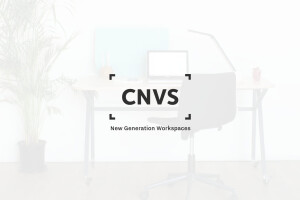Educational institutions are increasingly seeking ways to rethink and transform learning environments in a way that increases the possibility of exploration. With this aim in mind, The Private Sezin School in Istanbul approached ATÖLYE’s spatial design team in 2014, to design a space for for K-12 students to enable problem-based learning by engaging 21st century skills.
Instead of considering educational structures in the conventional sense, ATÖLYE sought to reimagine the 1,700 m2 rooftop space of the Private Sezin School as a pedagogical laboratory, in which different facilities were integrated transparently. In designing this space, the ATÖLYE team considered the need for deliberate interaction zones between parents and teachers, a more spacious yet open layout for teachers’ private work zones, a need for hands-on learning via a makerlab and reimagining corridors as interaction zones with increased transparency. This new structure enables the smooth transition between acoustically separated, visually connected zones, designed primarily to make, learn, meet and work.
The process started with a participatory session in February 2014, where ATÖLYE facilitated a Design Thinking session with teachers, staff and external advisors of the Sezin school. ATÖLYE first embarked on an extensive desktop and field research process in order to diagnose key issues within the institution, as well as on a global scale. One survey revealed that more than half of the teachers in the school desired a personalized work space, a more social environment and modular furniture. The team also considered current global trends and movements within the field of education, including the emergence of project-based learning, maker culture in pedagogy, reimagined libraries as social workspaces, and 24-7 open educational spaces. Building on these insights, the team developed a strategic spatial program, which included an unusually large teachers’ zone, a flexible events venue, a public meeting room dedicated to educational NGOs to foster partnerships, a makerlab with three sections (media lab, wood shop, bio lab) and small lounge booths for comfortable parent-teacher dialogue.
Aside from custom-made CNVS series, collaboration with British startup Open Desk, an open-source furniture system, enabled diversity on the furniture scale. The design team optimized teachers’ zone by developing personalized desk separators rather than private desks, and diminished the space need while increasing likelihood of interaction among teachers.
In terms of spatial graphics, the project used a progressive design language that emphasizes values such as playfulness, openness and wit. Copywriting and graphics added meaningful elements, such as an encalming messages within parent-teacher interaction zone to appease the potentially stressful conversations.
Architectural systems were developed in close synchrony with multiple technical specialists, leading to a high performance and integrated design. Ecological wood wool panels were placed across the ceiling surface to reduce reverberation and increase intelligibility in different learning settings, while serving energy efficiency goals. All lighting systems were specified as dimmable low-Kelvin LEDs, supporting flexible learning while reducing energy use. From daylight standpoint, a central atrium covered with sound-absorbing, low-embodied energy, lightweight polycarbon panels provide ample daylight to spaces while narrow windows punctuate the surface creating shifting vantage points. Mechanical systems were selected with highest locally available efficiency ratings, while separating fresh air and exhaust air systems by coloring, thus serving as an educational vessel for children. A well-tuned building automation system was designed to capture the efficiency gains by integrating underfloor heating, VRV cooling, mechanical ventilation and operable windows.
From user experience standpoint, architectural nuances such as ample storage spaces for mobile furniture, wide corridors for spill-out usable spaces, no-shoe zones for informal interaction, elevated platforms for focused work, writeable wall surfaces, and acoustic windows foster spatial diversity at large.
At the furniture scale, rather than moving forward with integrated systems, ATÖLYE team developed its existing CNVS furniture line with new modular and flexible products. Ranging from a stage seating on wheels to acoustically isolated hub structures, from mobile bookselves to stand-up work tables, the bespoke furniture portfolio allows for permutational layouts. In a way, the furniture system suggests all users to become actants rather than passive observers or victims of context. Aside from custom-made CNVS series, collaboration with British startup Open Desk, an open-source furniture system, added diversity to the portfolio with its flat-pack CNC fabricated models. All furniture was manufactured within 50 km of the site, while utilizing FSC-plywood, low-impact felt, recycled sponge and recycled steel.
In terms of spatial graphics, the project used a progressive design language that emphasizes values such as playfulness, openness and wit. Combining a neutral typeface such as Sailec with pastel tones and laser-cut plywood signage produced at ATÖLYE, the signage cultivates all users to feel both cared for and empowered.
Through this project, the architectural team of ATÖLYE conducted a small scale intervention to stimulate the change of an established educational organisation in the heart of Istanbul. Increasing the students overall motivation and their willingness to participate in educational activities, the beyond-classroom space acts as a ‘trojan horse’, which facilitates a more productive school environment.
















































